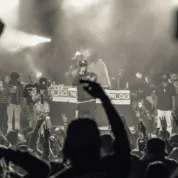
Rapping, DJing, Breakdancing, and Graffiti, and often cited as the defining elements of Hip Hop. But limiting this genre that has revolutionized music since the 1980s to just those 4, leaves much to be desired. Hip Hop didn't just emerge as a new style of music, it exploded from underground beginnings in the Bronx, to become a global, cultural juggernaut. How did it transcend the disco, soul, rock and jazz samples from which it emerged, to carve out such a distinct and influential niche? When you trace its roots from the underground NYC block parties of the 1970s to its dynamic evolution in the face of major technological advancements, you'll find not just 4, but actually 8 characteristics of Hip Hop that have developed over its history, cementing its impact and popularity across the world.
What is Hip Hop?
In its simplest form, Hip-Hop is a style of music originating in the Bronx, New York City, during the late 1970s. But the impact it had goes much deeper, creating a dynamic cultural movement that includes multiple characteristics of Hip Hop such as rapping, breakdancing, sampling, DJing, and more. By the time the 2000s rolled around, hip-hop had firmly established itself as a global sensation. Artists had emerged from diverse regions across the East Coast, West Coast, and even the "Dirty South", playing a significant role in defining Hip Hop as a new music genre, and developing a rich culture along with it. The chart topping songs it produced and the talented artists that pioneered it, were instrumental in taking the sounds and techniques of disco, soul, rock, and even jazz, and reimagining them into a powerful medium for social, political, and cultural commentary, that we've come to love as Hip Hop.
The History of Hip Hop
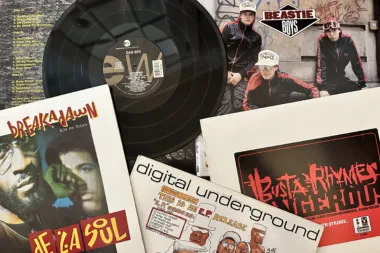
Hip Hop began its journey in underground clubs and block parties in neighborhoods of the Bronx, New York City, in the late 1970s. Pioneers like DJ Kool Herc and Grandmaster Flash laid the genre's groundwork, using the 2 turntable DJ setup in Disco clubs to loop the break beats of popular songs, while rappers experimented with rhymes on top of it. By the 1980s the new art form had matured into a sound that began capturing the imagination of mainstream music. Def Jam Recordings played a pivotal role taking artists like Run DMC, LL Cool J, and the Beastie Boys to a national audience, setting the stage for its domination in the music industry.
As hip-hop's popularity surged, it found a new home on the West Coast, giving birth to a unique sound and sparking an intense East-West rivalry. This era saw the rise of gangsta rap, a subgenre that narrated the gritty realities of urban life with raw honesty. Artists like N.W.A and Tupac Shakur became icons, using their music to tell stories that were often overlooked by mainstream media. Groups like A Tribe Called Quest and De La Soul, part of the Native Tongues collective, emerged as a counter-alternative to gangsta rap, blending hip-hop with jazz rhythms and positive, Afrocentric messages. This providing a refreshing contrast to the aggression of gangsta rap, and showcased the genre's vast potential and versatility.
The 1990s also saw the rise of the "Dirty South" in places like Atlanta, where artists added new dimensions to hip-hop, incorporating a mix of vocal styles and musical experimentation. This period marked the emergence of subgenres like G-Funk, characterized by its laid-back, melodic synthesizers and slow, heavy beats, and rock rap, which blended elements of hip-hop with rock music.
As it moved into the 2000s, the characteristics of Hip Hop continued to absorb influences from different genres and cultures, with new stars who blending hip-hop with pop, R&B, and electronic music. The story of hip-hop is one of constant evolution and reinvention. From humble beginnings on the streets of NYC to a global cultural powerhouse, where it has remained as a vibrant platform for artistic expression, social commentary, and cultural connection.
The 8 Characteristics of Hip Hop
The characteristics of hip-hop music are essential pillars that have shaped the genre's evolution and enduring appeal. Over the decades, since its inception in the vibrant streets of New York, hip-hop has maintained its fundamental traits while also embracing innovation. From the rhythm that resonates with our innermost vibes to the profound cultural influence, the 8 characteristics of hip-hop paint a comprehensive picture of this genre's distinctiveness. These elements have not only allowed hip-hop to remain relevant but have also enabled it to forge deep connections across diverse audiences worldwide.
1. Rapping

Rapping, the defining vocal style of hip-hop music, is an art form that combines elements of poetry, storytelling, and rhythmic speech. Our list of the top 20 greatest rappers of all time by TikTok influencer Ted the Toy Collector showcases this masterfully. Unlike singing, which relies on melody, rapping focuses on rhythmic and rhyming speech, offering a more direct and spoken form of expression. The origins of rapping can be traced back to African griots, who were storytellers that used rhythm and rhyme in their oral narratives. This tradition, melded with influences from jazz and blues, laid the foundation for what would become modern rapping.
In the early days of hip-hop, in the 1970s Bronx, rapping served as a way for artists to express their experiences and views. Pioneers like DJ Kool Herc and Grandmaster Flash used their voices not just to tell stories, but to comment on social issues, creating a powerful form of urban poetry. As hip-hop evolved through the 1980s and 1990s, artists like Tupac Shakur and Notorious B.I.G. took rapping to new heights, using it as a tool for storytelling, social commentary, and personal expression. The characteristics of Hip Hop that they emphasized varied from the rhythmic complexity of Rakim to the emotive storytelling of Slick Rick.
Notice how much the complexity or rap evolved over 30 years, from it's early days in the Big Daddy Kane video below, to Logic's release of "Take It Back" in 2017...
Modern rappers continue this tradition, with artists like Kendrick Lamar and J. Cole using their lyrics to address contemporary issues, blending personal narratives with wider societal commentary. Rapping has become a global phenomenon, with each artist bringing their unique style and background to the genre, further enriching its diversity.
The significance of rapping in hip-hop cannot be overstated. It's more than just a method of delivering lyrics; it's a way for artists to connect with their audience on a deeper level, sharing experiences, emotions, and perspectives. This connection is what makes rapping a central element of hip-hop culture, linking it to the genre's roots in social activism and community expression.
2. Beats and Rhythm
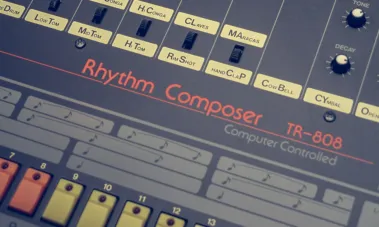
The beats and rhythm of hip-hop music are its sonic backbone, providing the framework upon which all other elements are built. This characteristic of hip-hop is what gives the genre its distinctive sound and feel. The creation of hip-hop beats often involves the use of drum machines, synthesizers, and samples, blending traditional musical elements with modern technology to create something entirely new.
The history of hip-hop beats is closely tied to the technological advancements in music production. In the late 1970s and early 1980s, the advent of affordable drum machines like the Roland TR-808 allowed producers to create complex rhythms with a distinctive sound. This era saw the rise of producers like Afrika Bambaataa and Marley Marl, who used these tools to craft beats that were both innovative and deeply rooted in the rhythmic traditions of funk and soul music.
As hip-hop progressed, the art of beat-making continued to evolve. Producers like Dr. Dre and J Dilla pushed the boundaries, experimenting with layered samples, off-kilter rhythms, and rich, textured soundscapes. Their work not only defined the sound of their respective eras but also influenced a wide range of music outside of hip-hop.
Notice how far Hip Hop drums evolved in just 6 years in the videos below with one band, the Beastie Boys. Their song "Paul Revere" off their first album developed a cult following for its use of a classic 808 drum beat, which they cleverly played backwards. But just three albums later, on 'Check Your Head,' they were mixing drum samples with live drums in ways that make 'Paul Revere' sound like child's play. The complexities of Hip Hop beats would only continue to mature into the 2000s.
The rhythm in hip-hop is more than just a beat; it's a cultural heartbeat that resonates with listeners. These rhythms often mirror our own physiological rhythms, such as heartbeat and walking pace, making the music inherently relatable and physically engaging. The beat serves as the foundation for the characteristics of Hip Hop, promoting dancing, nodding, and feeling the music, making it a crucial aspect of the genre's appeal and impact.
Furthermore, the beats and rhythm in hip-hop are not just about sound; they're about identity and community. They provide a canvas for artists to express themselves, tying together the lyrical content with the cultural and societal themes inherent in hip-hop. This integration of beats and rhythm with the genre's other elements makes it a powerful tool for artistic expression and cultural commentary.
3. Sampling

This is where expanding the characteristics of Hip Hop from 4 to 8 becomes apparent. Beats, rhythm, sampling, and DJing are traditionally lumped together, selling each element short, as each has not only existed on its own but also excelled. The sound of Hip Hop began by looping break beats to keep people on the dance floor, without any sampling or rapping. Sampling was added later, and flourishes today in production without the use of break beats or a DJ. Likewise, DJing has expanded far beyond beats and sampling. So, while these elements may have been tightly integrated initially, they have become very distinct characteristics throughout the evolution of Hip Hop.
Sampling allows producers, DJs and artists to breathe new life into snippets of their musical creations. The practice involves taking portions of melody, beats, or vocal phrases from existing records and repurposing them into a new musical context. The art of sampling has roots in the genre's early days when DJs and producers, limited by budget and resources, creatively used fragments from funk, soul, and disco records to construct new sounds.
The technique of sampling revolutionized music production, allowing hip-hop artists to create a collage of sounds that could evoke nostalgia, deliver a message, or simply set a mood. Pioneers like DJ Premier and Pete Rock mastered this art, turning sampling into a form of musical storytelling. Their ability to find and repurpose obscure samples helped define the sound of classic hip-hop.
Sampling also opened up a dialogue between different musical eras and genres. It introduced hip-hop audiences to a plethora of sounds from diverse musical traditions, thereby broadening the genre's appeal and enriching its sound. This practice has not been without controversy, particularly around copyright issues, but it has remained a fundamental aspect of hip-hop's identity.
Sampling is a reflection of hip-hop's resourceful and communal roots. It's a way for artists to pay homage to their musical influences while simultaneously making a statement of their own. As hip-hop continues to evolve, sampling remains a core technique, constantly being reimagined and redefined by new generations of artists.
4. DJing
DJing in Hip Hop is an art form that involves the skillful manipulation of turntables to create new music. This aspect of hip-hop emerged in the 1970s in the Bronx, where pioneering DJs like Grandmaster Flash and DJ Kool Herc used turntables not just to play music but to transform it. Techniques such as scratching (moving a record back and forth on a turntable to create a rhythmic sound) and beat matching (aligning the beats of two different records to create a seamless transition) became fundamental to hip-hop music.
Turntablism, as it came to be known, allowed DJs to interact with music in a dynamic way, effectively turning the turntable into an instrument. This transformation played a crucial role in the development of the characteristics of Hip Hop, giving rise to a new form of musical expression. DJs became central figures in hip-hop culture, not just playing music but also creating it, often setting the stage for MCs (rappers) to perform.
The influence of DJing in hip-hop is profound. It brought a new level of creativity to music production, influencing not just hip-hop but also other genres. The skills of scratching and beat matching, once novel, are now integral parts of the DJ’s repertoire, used across various musical landscapes.
DJing also reflects the interactive and communal aspects of hip-hop. DJs often perform in front of live audiences, where they can respond to the crowd's energy and create a unique musical experience. This aspect of DJing underscores the genre's roots in live performances and community gatherings, where music is a shared experience.
5. Lyricism
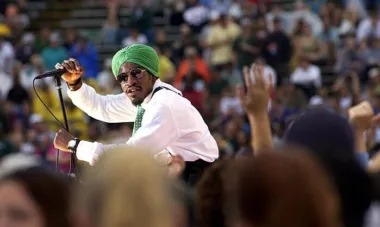
Lyricism is overlooked in the traditional 4 elements of Hip Hop, reducing it to little more than the rhyme and rhythmic speech of "rapping" mentioned above. But the lyrics go much deeper than this. They are a critical component, often addressing contemporary issues, personal experiences, and social commentary. Hip-hop lyrics are marked by their poetic nature, with artists using metaphor, storytelling, and wordplay to convey their messages. This aspect of hip-hop has its roots in the African American oral tradition, where storytelling and spoken word were used to preserve history, share experiences, and comment on society.
Hip-hop artists use their lyrics to tell stories about their lives, their communities, and the world around them. The content can range from the struggles of urban life to political activism, from personal triumphs to social injustices. Even from the early days of Def Jam, artists like Public Enemy and KRS-One used their lyrics to raise awareness about social and political issues, with others like Jay-Z and Nas emerging later to share deeply compelling personal narratives and experiences.
The power of the characteristics of Hip Hop lies in the ability of its lyrics to connect with listeners, offering a window into different experiences and perspectives. This connection is not just through the content of the words but also through their delivery. The rhythm, flow, and style of the lyrics all contribute to the impact of the message.
Hip-hop lyrics have also played a role in shaping the language and discourse of contemporary culture. The genre's influence can be seen in the way people speak, write, and interact, making hip-hop lyrics a significant cultural and linguistic force.
6. Breakdancing
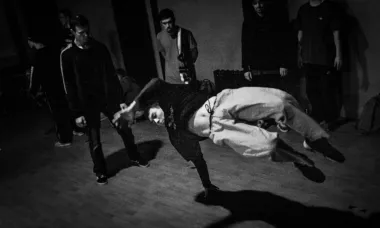
Dancing, although not a musical element, is an integral part of hip-hop culture. While there are many types of hip-hop dancing, including krumping, locking, and popping, they all stem from breakdancing, which is central to hip-hop's origins. Breakdancing emerged alongside hip-hop music in the 1970s in the United States, particularly in urban areas like New York City. Breakdancing, or breaking, is characterized by its athletic and acrobatic moves, including top rock, down rock, power moves, and freezes.
The origin of breakdancing is a reflection of hip-hop's grassroots nature. It began in the streets, with dancers, known as b-boys and b-girls, using their bodies to interpret the beats and rhythms of hip-hop music. The dance style quickly became a form of self-expression and identity for youth in urban communities. Breaking battles, where dancers would compete against each other, showcasing their skills and creativity, became a staple of hip-hop culture.
Breakdancing not only reflects the rhythmic and physical aspects of hip-hop but also its competitive and communal spirit. The dance battles fostered a sense of community and healthy competition, helping to spread hip-hop culture around the world.
Today, breakdancing has evolved into a global phenomenon, with dancers incorporating elements from various dance forms and cultures. Its inclusion in events like the Olympics is a testament to its enduring appeal and the skill required to master it. Breakdancing continues to be one of the most vibrant and dynamic characteristics of Hip Hop culture, embodying the genre's energy and creativity.
7. Culture and Style
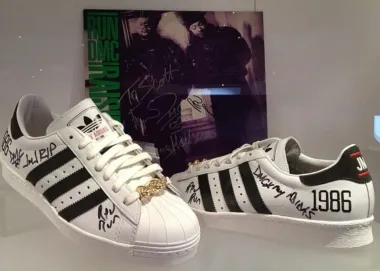
Hip-hop extends far beyond music, encompassing a specific lifestyle and fashion that has influenced attitudes, language, and culture worldwide. This aspect of hip-hop is about more than just clothes and accessories; it's about identity and expression. Hip-hop fashion, characterized by its bold and often oversized garments, evolved from the streets and has since infiltrated mainstream fashion.
The culture and style of hip-hop are reflective of the genre's origins in urban communities. Elements like graffiti art, breakdancing, and DJing are not just forms of entertainment; they are expressions of a way of life. Hip-hop culture has always been about making a statement, whether through music, dance, art, or fashion.
This cultural aspects of the characteristics of Hip Hop had a significant impact on society, influencing everything from language to politics. Hip-hop has given a voice to the voiceless, providing a platform for marginalized communities to express their experiences and views. It has also challenged societal norms, pushing boundaries in fashion, music, and art.
The global spread of hip-hop culture has led to a cross-pollination of styles and ideas, with artists and fans from different parts of the world adding their unique flavors to the genre. This diversity has enriched hip-hop, making it a dynamic and ever-evolving cultural movement.
Hip-hop's influence on culture and style is undeniable. It has become a way for people to connect, share experiences, and express themselves, making it much more than just a musical genre. It is a lifestyle, a mindset, and a powerful cultural force.
8. Graffiti
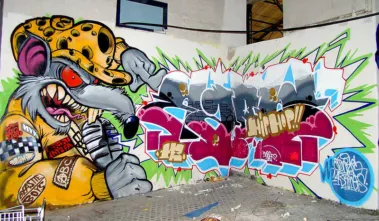
Graffiti art is as much a part of the characteristics of Hip Hop as the music itself. Originating in the urban landscapes of cities like New York in the late 1960s and 1970s, graffiti was initially seen as a form of vandalism. However, for the artists, known as graffiti writers, it was a means of expression and a way to claim space in a city that often overlooked them. Graffiti in hip-hop is characterized by its bold colors, intricate lettering, and often provocative messages.
The early graffiti artists used their work to communicate with each other and with the wider community. Tags, or stylized signatures, and murals became a way for individuals to make their mark, both literally and figuratively. As hip-hop music spread, so did graffiti art, becoming a global language of resistance, identity, and self-expression.
Graffiti has evolved over the years, with artists exploring different styles and techniques. It has moved from the streets to galleries, gaining recognition as a legitimate art form. Yet, it retains its edge, often serving as a voice for the marginalized and a commentary on social and political issues.
Graffiti art and hip-hop music share a synergistic relationship, each influencing and reflecting the other. The visual language of graffiti provides a backdrop to the sonic landscape of hip-hop, together creating a rich tapestry of urban culture.
A Global Social Consciousness from the Streets of the Bronx
Hip-hop's journey from the streets of the Bronx to the global stage, is a testament to its power to resonate across boundaries, and its adaptability to give a voice to diverse experiences and stories across cultures. What began as a grassroots break beat movement has blossomed into a rich tapestry of entertainment, fashion, language, politics, creating a global social consciousness. As the characteristics of Hip Hop continue to evolve, expect it to keep challenging norms, inspiring innovation, and, most importantly, giving rhythm to the voices of the unheard.
To learn more about the history and impact of Hip Hop, make sure to read these recent articles:

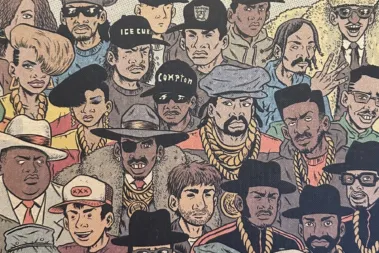
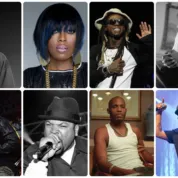




Leave a Reply!